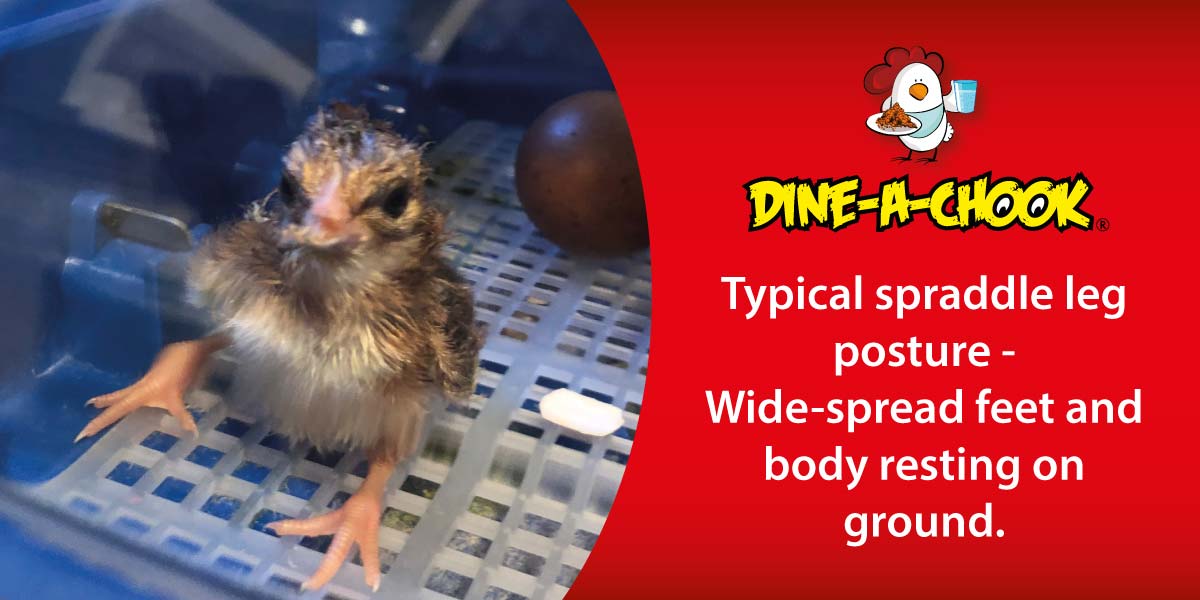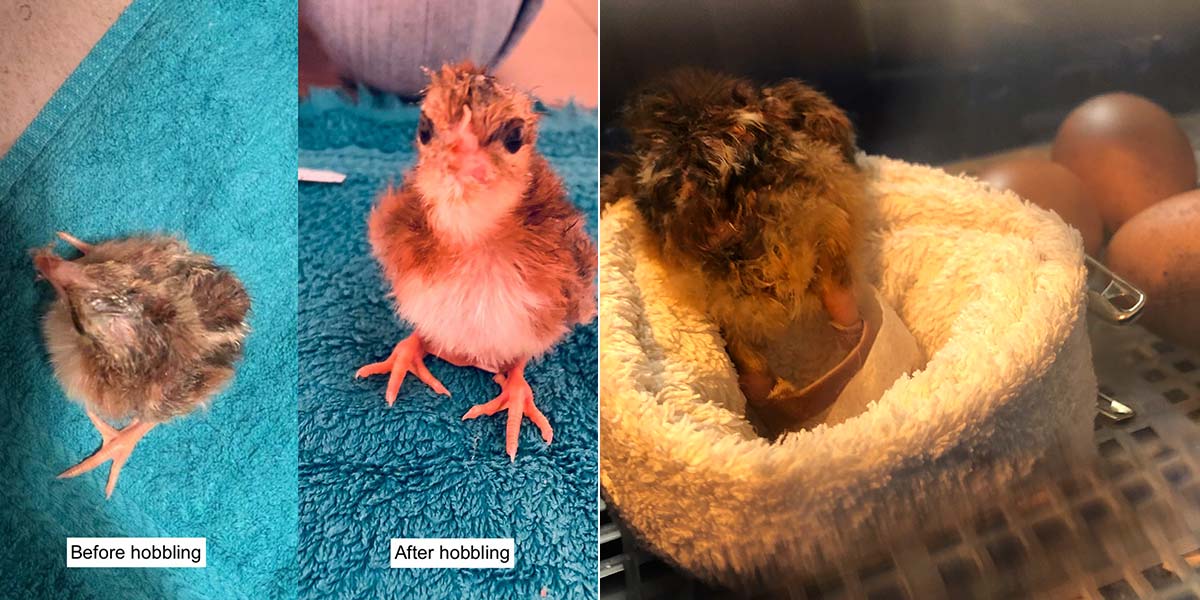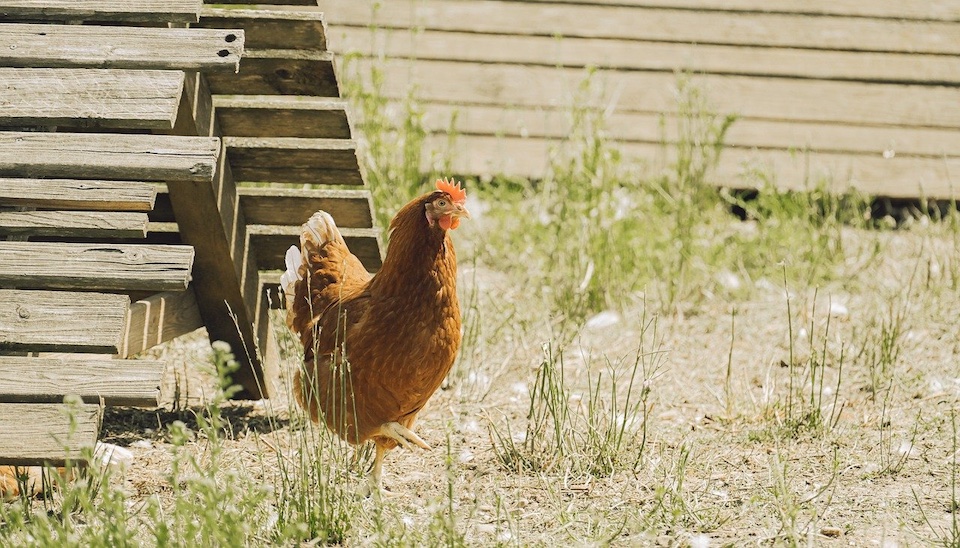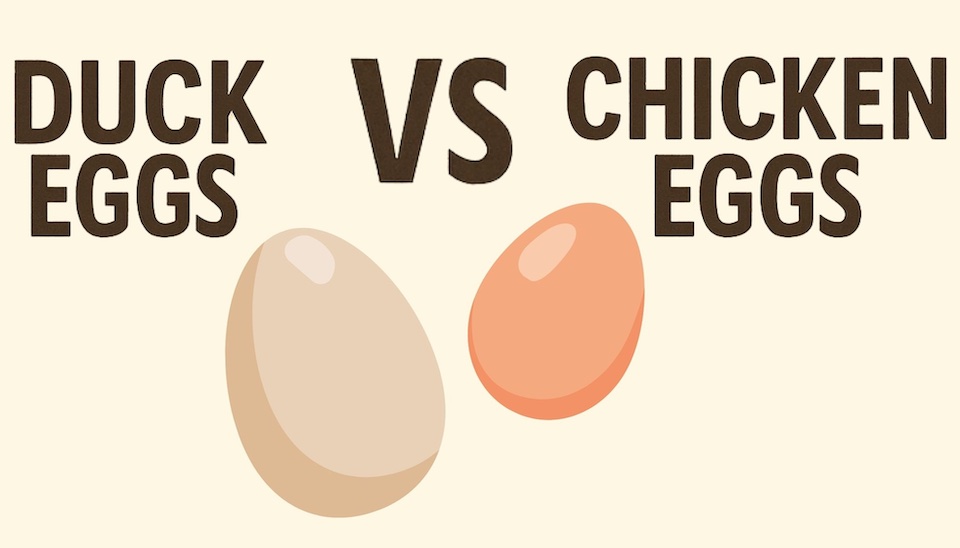How to treat spraddle leg
Recognise and treat spraddle leg chicks
Spraddle leg, also called splayed legs, is a common deformity in newly hatched chicks. If left untreated, the chick is unlikely to thrive.
Fortunately, spraddle leg is easy to treat. If treated early, chicks with spraddle leg have a very good chance of recovery and will grow into healthy, normal adult birds.
(:1f414:) What is spraddle leg?
Spraddle leg is fairly common and customers often ask us about it.
A chick with spraddle leg will not be able to stand or move around normally. Instead, it will rest on its belly with one or both legs splayed out to the sides.

Spraddle leg is most common in newly hatched chicks, but can appear in older chicks.
Chicks grow rapidly and if the splayed legs are not treated, their bones and muscles will not develop normally. A chick with deformed legs and feet is likely to suffer pain and will rarely survive to adulthood.
(:1f414:) What causes spraddle leg in chicks?
Spraddle leg has a number of causes.
In newly hatched chicks, spraddle leg can be caused by:
- High humidity during incubation
- Temperature fluctuations during incubation
- Less than ideal conditions during hatching
- Poor diet or nutritional deficiency in parent birds, usually related to manganese, choline, zinc or B vitamins
- A difficult hatch
In chicks that are a little older, spraddle leg may be caused by:
- A slick or slippery brooder surface, such as plastic, newspaper or cardboard
- Being crushed by hatch mates (this is most likely in overcrowded or underheated brooders)
- A leg or foot injury, usually due to an accident
Occasionally spraddle leg goes undetected at hatching and worsens as a chick grows. It is important to observe new hatchings carefully as spraddle leg treatment is most effective with young chicks; their bones and muscles are more malleable and respond better to treatment.
(:1f414:) How to treat spraddle leg
Fortunately, most cases of spraddle leg will resolve in a few days if they are treated promptly.
To treat spraddle leg, the chick’s legs need to be held in the correct position to encourage correct muscle and bone development. The most common way to do this is by hobbling the chick.
Use a bandaid, bandage, hair tie or rubber band to tie the chick's legs together in a normal position. Be careful to ensure the legs are in the right place and that the brace is not too tight. It shouldn’t restrict blood flow or stick to the chick's legs. Check the hobble several times a day, replacing it to accommodate growth.
In the past, we have made a loose cuff on each leg out of the padded part of a bandaid. The cuffs can then be hobbled with tape or another bandaid without sticking to the chick's skin. This makes it easy to replace or adjust the hobble. But the cuffs can cause chafing and need to be checked regularly to ensure there is no skin damage.

Hobbled chicks have limited movement, so provide food and water regularly, ensuring the chick cannot accidentally drown. Also ensure the chick is kept at the right temperature. You may need to put the chick near the heat source, but be careful of overheating because, unlike a normal chick, a hobbled chick may not be able to move away if it is too warm.
If the chick is very small or your brooder is crowded, it may be best to house the chick with spraddle leg separately to prevent further injuries caused by hatch mates. For bright chicks with few hatch mates, remaining in the brooder can encourage movement and aid recovery.
Once the chick begins to recover, loosen the hobble gradually, allowing more slack between the legs. This allows the chick to build strength and makes it easy to see when the brace is no longer needed. In day-old chicks, recovery is often rapid, with chicks no longer needing the brace after a few days.
In severe cases, it might be necessary to provide the chick with support to stand several times a day. It is also possible to place the chick in a harness or container that allows the legs to remain in the correct position and supports the body in a standing position.
(:1f414:) How to prevent spraddle leg
Spraddle leg can be prevented by ensuring your breeding birds have a high-quality diet supplemented with essential vitamins and minerals. A breeder feed is recommended with a low-dose supplement for insurance.
Although more difficult to control, providing ideal incubation conditions also helps prevent spraddle leg. Only set eggs under reliable hens. If using an incubator, follow instructions carefully and have a back-up plan in the case of a power outage. Avoid fluctuations in temperature and humidity by situating the incubator away from draughts and only opening it when absolutely necessary.
Another important preventative measure is an appropriate brooder. Ensure chicks are not walking on slippery surfaces. This includes the tray in your incubator as well as brooder floors. Newspaper and cardboard are slippery for small chicks. Use paper towels or cloth until the chicks are able to recognise food. After that, wood shavings, chopped straw or even sand makes a good brooder floor.
In the brooder, avoid overcrowding and ensure there are adequate heat sources available. If chicks are cold, they tend to huddle together and can pile up, injuring the chicks on the bottom.
Happy hatching! For more information about raising chicks, check out our blog!
Rachael at Dine a Chook Australia



